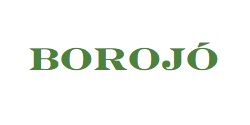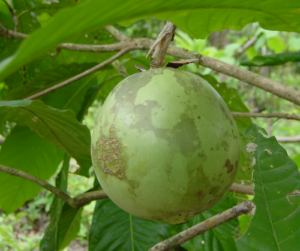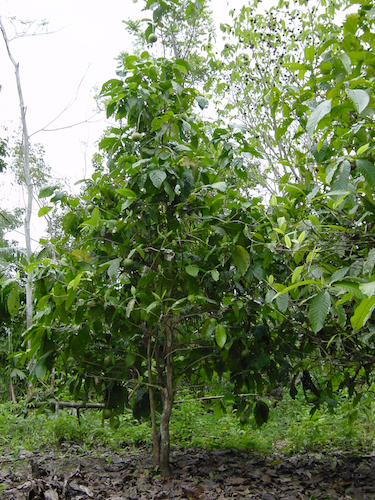What is Borojo?
Data sheet
Family: Rubiaceae
Common name: Borojo.
Scientific Name:
Borojoa patinoi Cuatrec. There is also Borojoa sorbilis Cuatrec. Both species are similar, varying in the type of floor where it grows. This website focuses on Borojoa patinoi.
Borojo’s economic importance
Borojo can be found in the wild and commercial plantations. It is used for human consumption as: Juice, ice cream, capsules and jelly, to mention a few.
Description
The Borojo tree is about 3-5 meters. The fruit has 7 to 12 centimeters in diameter, and its color is green. The pulp is brown, acid, and very dense (30º Brix, consisting mostly of fructose and glucose). The fruit has around 90 to 600 seeds, and it is considered ripe when it falls in the floor.
Under the name Borojo are known some species of Rubiaceae, that grow in the Amazonia and Central America, all of them with the same popular use, and with similar properties.
This plant grows mainly in the zone of “Geographic Chocó”. Among other species of the genus Borojoa, only the so called “puruí” from Bajo Amazonas, (B. sorbilis y B. verticillata), are similar to the “chocoan” (jungle) borojo.
Characteristic DNA sequences of main species of Borojoa and of Borojoa sp. Have been determined by Claes Persson , from Botanical Institute, Göteborg University, Sweden.
The Borojo fruit weights an average of 740 g, where 88% is pulp, and 12% seeds and shell. The pulp of this fruit has high content of carbohydrates and calcium.
Geographic distribution and origin
Some parts of Colombia (Humid forests), Ecuador, and Panama (Darién). Borojo is found in the rainy forests, on the rainy region of the Pacific coast of Colombia, where the annual average rain fall is more than 4,000 mm; The average temperature is 28ºC and the relative humidity 85%. It grows in the shade of other trees. Adapts well up to 1,200 m altitude.
This plant grows mainly in the zone of “Geographic Chocó”. Among other species of the genus Borojoa, only the so called “puruí from Bajo Amazonas, (B. sorbilis y B. verticillata), are similar to chocoan borojo.
Borojo characteristics
DNA sequences of main species of Borojoa and of Borojoa sp. Have been determined by Claes Persson , from Botanical Institute, Göteborg University, Sweden.
The Borojo fruit weights an average of 740 g, where 88% is pulp, and 12% seeds and shell. The pulp of this fruit has high content of carbohydrates and calcium.


